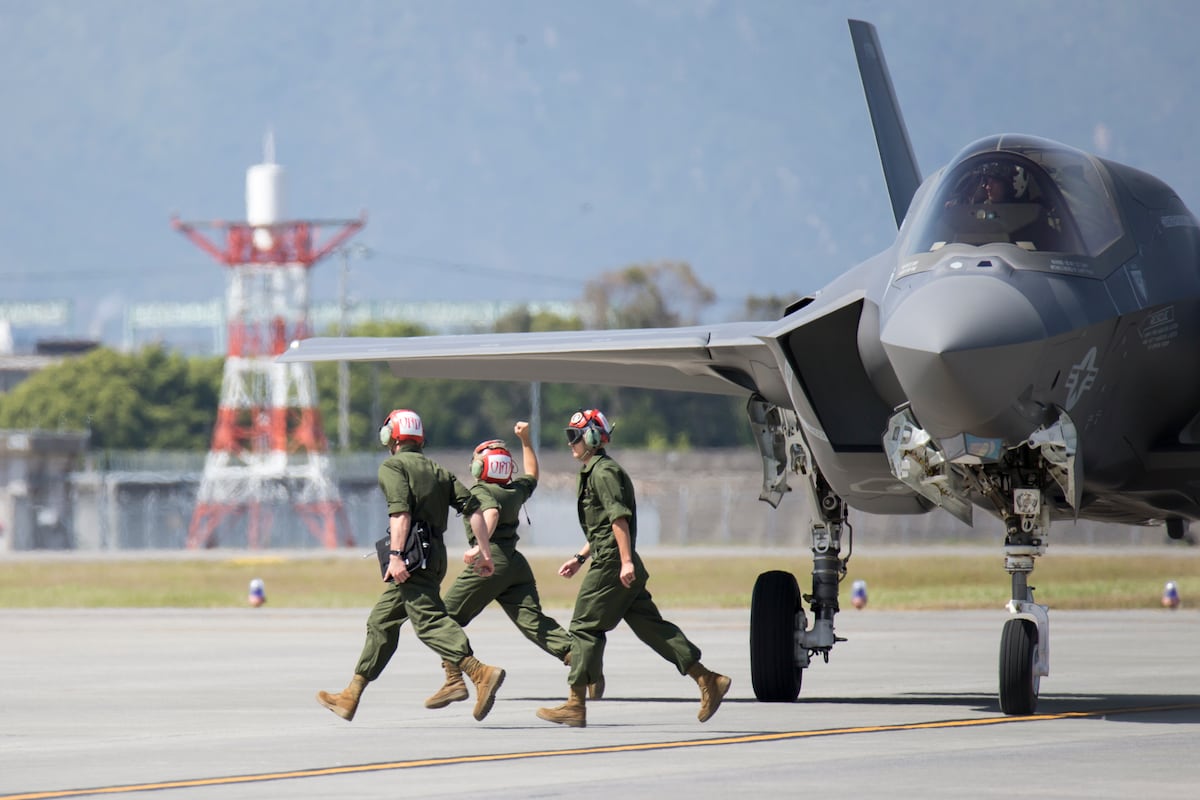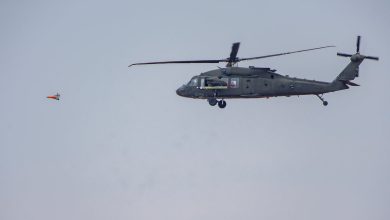American air bases “can no longer be considered a sanctuary.” That is the sobering conclusion of the U.S. Air Force’s new Installation Infrastructure Action Plan, released last week. Unlike the last 30 years, when U.S air bases were largely safe havens from enemy attacks, the document continues, “adversaries now possess high-end capabilities” that can threaten such installations.
This warning is correct, but it understates the threat.
In our new Stimson Center report, “Cratering Effects: Chinese Missile Threats to US Air Bases in the Indo-Pacific,” and co-authored with Jonathan Walker, we conclude that Chinese missile strikes could keep U.S. military runways and taxiways in Japan, Guam, and other Pacific islands closed in the critical first days — and even weeks — of a war between the United States and China. Even if the United States undertook massive investments in a mix of active and passive countermeasures, runways and taxiways would remain closed for at least the first several days of any conflict.
Specifically, the United States would not be able to operate fighter aircraft from U.S. air bases in Japan for close to the first two weeks of a conflict, including from Kadena Air Base and Marine Corps Air Station Futenma, located closest to the Taiwan Strait. These are the only two locations from which U.S. fifth-generation fighters would be able to complete their missions and return to base without requiring aerial refueling. Most importantly, Chinese missiles could keep U.S. military runways in Japan closed to aerial refueling tankers — and the aircraft which depend on them for in-flight fuel — for over a month.
China’s growing reach could also keep U.S. air bases in Guam and other Pacific locations closed to tankers and bombers for at least the first four days of a conflict, and thereafter the United States would face other significant operational problems. For example, low-flying and slow-moving tankers are already vulnerable to Chinese air-to-air and surface-to-air missiles, but they would be especially easy for China to detect and shoot down when flying predictable flight routes from Guam and a handful of other Pacific bases.
Unfortunately, no single countermeasure — or even a combination of countermeasures — will be sufficient to counter runway attacks by the People’s Liberation Army Rocket Force. Our results validate the Air Force’s Agile Combat Employment concept of dispersing U.S. aircraft and personnel more widely across multiple locations. If the United States were to disperse to civilian airfields in the Pacific, as well as Japan Self Defense Force bases and civilian airfields in Japan, assuming it had the necessary political permissions, the shortest closure time would decline by over 70% in Japan, or three days for fighter operations and nine days for tanker operations. Within the Second Island Chain, closure times would drop only by about 10%, with runways opening on the fourth day.
These results, however, assume all personnel, equipment, and repair materials are available and ready for use at these other operating locations, which is not the case. Even if Washington and Tokyo made these substantial investments, Chinese missiles would still keep aircraft grounded in the critical first days of a war, when the U.S. Air Force might be expected to quickly set up a combat air patrol or sink Chinese ships in the Taiwan Strait.
Recently, senior Air Force leaders have emphasized the need to protect U.S. air bases in the Indo-Pacific with more robust missile defense capabilities, with Air Force Secretary Frank Kendall going so far as to suggest his service should take over this mission from the Army. Our findings suggest that even a massive buildup of U.S. missile defense capabilities is likely to fall short, however, even when combined with other countermeasures.
For example, even if the United States grew its Patriot missile defense force — expanding to 20 Patriot batteries and deployed them all to protect runways in Japan — China could still deny the use of these runways by fighters in the first two days of a war, and thereafter fighters would have to operate without any tanker support for another week. Without tankers, these fighters would have to fly fewer sorties each day. The operational gains hardly seem to justify the costs, especially because China could easily offset these investments by increasing its missile stocks.
Instead, the United States will need to outthink — not outspend — China. Doing so requires the Air Force to prioritize the air denial mission within the First Island Chain, including building an inside air force around large numbers of runway-independent platforms and drones of various types and different ranges. Over time, as the Chinese missile threat dissipates, the United States could bring forward more traditional crewed aircraft, including advanced fighters and the tankers required to support them, and transition to air superiority and offensive strike missions. To make that happen, however, the Air Force will need to move more rapidly toward uncrewed and autonomous systems, preposition equipment and munition stockpiles, and prepare to prioritize air denial in the initial air war.
Kelly Grieco is a senior fellow with the Reimagining US Grand Strategy Program at the Stimson Center, an adjunct professor of Security Studies at Georgetown University, and a nonresident fellow at the Brute Krulak Center of the Marine Corps University.
Hunter Slingbaum is a junior fellow with the Reimagining US Grand Strategy Program at the Stimson Center.
Read the full article here





